The Role of Ergonomics – Delivering Wellbeing in Agile Environments
Darren Hilliker, Architecture & Design Manager at CMD Ltd, discusses the risks of poor ergonomics in hot desking environments and suggests some solutions
[Find CMD on the BCFA Product Finder]

With all the stresses and strains of lockdowns and furlough, much of the wellbeing focus for employers has been on mental health over the past couple of years. The isolation of working from home, against a backdrop of health concerns, financial insecurity and the upheaval of routines has taken its toll on people’s mental and emotional wellbeing, so it’s no wonder this has taken priority.
But as employers implement strategies to bring their teams back into the office, they face changing wellbeing challenges. For many, the workplace in 2022 looks very different from the one they left behind at the beginning of 2020. Agile working models that combine homeworking with hot desking mean that employees have to adjust to sitting in a different seat – with a potentially different seating, desk and screen configuration – every day. This not only involves cerebral and emotional challenges as they adjust to new working routines, it also involves the physical challenge of adjusting their posture to a new workstation every time they enter the office.
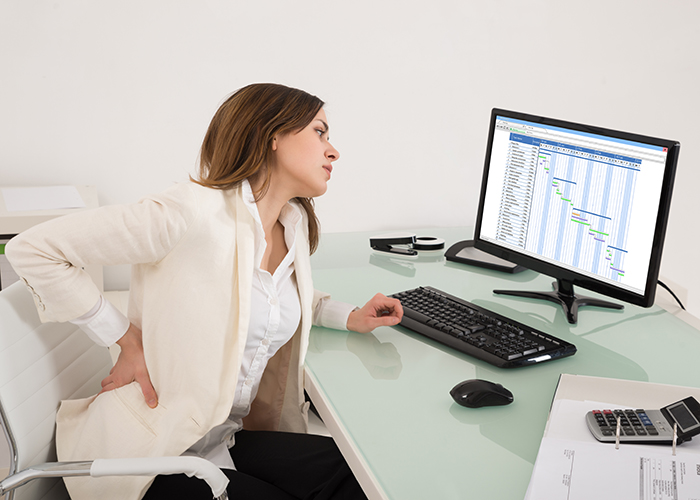
It may seem like a minor consideration after what we’ve all been through during the past two years; after all, many have been perched at the edge or a kitchen worktop or crammed into the corner of a spare bedroom. However, people have had the time and opportunity now to adjust their work environment and routine at home. Conversely, the return to the office after Covid will be the first time many have experienced hot desking, which involves fitting a standard workstation to their own, non-standard dimensions and comfort requirements each time they sit down to work. To help them do this, office specifiers not only need to consider the workstation and seating in hot desking environments, but also the need for easily adjustable monitor arms and laptop stands.
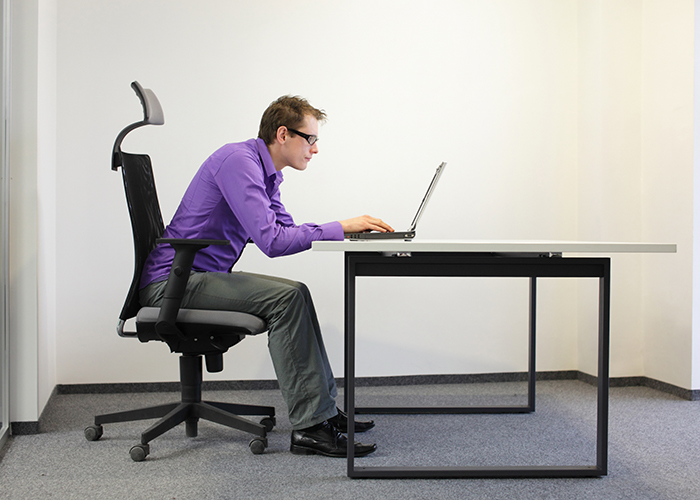
Why is an ergonomic workstation so important?
Working at a screen that is too low, too high or in a position that causes the user to twist to see it properly can result in poor posture and, over time, this can lead to musculoskeletal strain and ergonomic injury. Conditions caused by poor workstation ergonomics include neck and back strain, RSI (repetitive strain injury), tendinitis and tennis elbow, and the impact can range from discomfort to pain that results in reduced productivity or time off work. It is estimated that a third of workplace injuries in office environments are due to ergonomic factors.
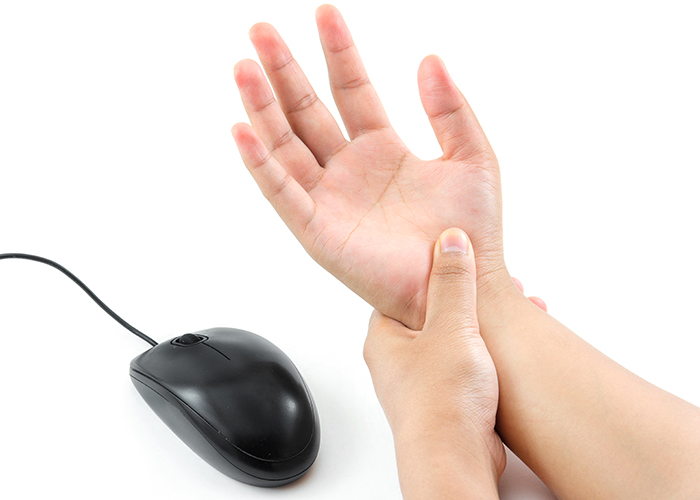
Part of the problem with ergonomic injuries, however, is that people don’t always realise that poor ergonomics at their workstation is compromising their posture and putting strain on their body. They may compensate for an awkward seating position or screen height by hunching over their keyboard, twisting their spine or looking up at their screen, all of which can cause damage. In a hot desking environment, it is not possible to do an ergonomic assessment every time a new user starts work at the workstation, so the only solution is to specify equipment that can be easily adjusted for plug-and-play customisation by the user.

Ergonomic solutions for hot desking environments
There are three key solutions that can be installed in office environments to aid flexibility of workstations for ergonomic wellbeing.
Sit/stand desks are increasingly popular as these not only allow the user to adjust the height of the desk when seated, but also to vary between working in a seated and standing position. However, the cost of these desks can be an obstacle for specification in some environments and not all office workers want or need sit/stand functionality.
Use of an ergonomic chair is an important factor too, because the chair supports the spine and encourages a good seating position. A good chair should also be height adjustable and provide options for neck, back and arm support.
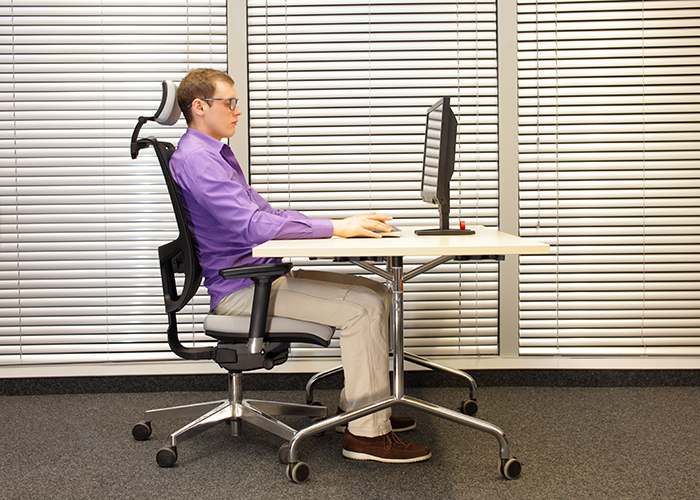
For hot desking environments, selecting the right monitor arm is perhaps the easiest and most effective measure for adapting workstations for different users quickly and easily. For example, CMD’s Reach Plus monitor arm, which attaches to any desk with a universal C clamp fixing, enables fingertip movement of the screen position to enable the user to adjust a single or double screen configuration to the optimum height and position for them. The monitor arm can support combined monitor weights of between 6kg and 15kg but the user can easily move them up, down, sideways or forwards and back.

Monitor arm development is constantly evolving and CMD will be launching the Miro monitor arm in 2022, which will be capable of supporting any monitor from 1kg to 10kg and allow the user to adjust the height of their screen quickly with a patent pending mechanism that allows synchronised movement of both arms, enabling them to open upwards and close downwards in a smooth and simple vertical action.

Many agile working models involve people working from laptops at home and bringing them into the office, so creating office workstations that enable rapid ergonomic set up of a laptop alongside a monitor are also in high demand. An example of this is CMD’s Vision H ergonomic workstation which can be configured with a single monitor support plus a laptop support, along with an option for x3 sockets and x1 USB type A&C charger. Providing ease of adjustment for both the monitor and laptop screen with the use of a separate key board, this allows rapid set-up and positioning, avoiding the temptation to hunch over a laptop.
Adaptability
Mental health will continue to be an important consideration as we (hopefully) ease out of the pandemic, but it should not overshadow the physical wellbeing of office workers. Workstations that can adapt to individuals are just as essential as individuals who can adapt to changing work routines.
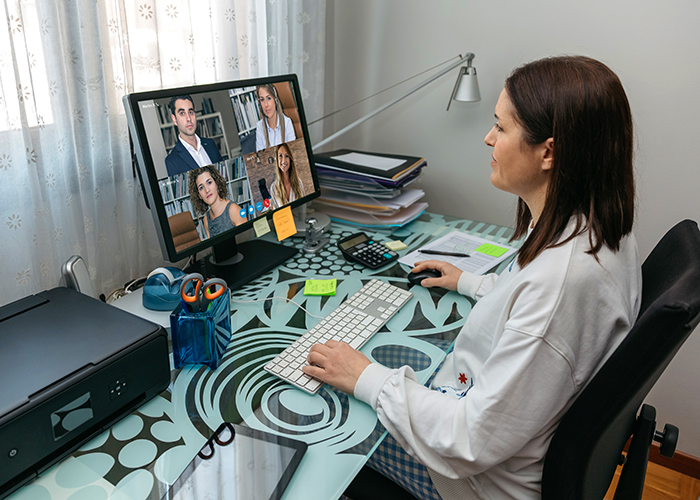
Contact CMD on the BCFA Product Finder
The BCFA Product Finder is a unique search engine created especially for interior designers to source contract furnishing companies. Utilising this platform will support your findings for upcoming projects, with over 200 members profiles showcasing the latest product launches, new materials available, industry news, and design trends.




